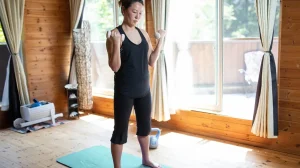Cold Plunge Therapy for Inflammation: Does It Really Work?

You’ve probably seen athletes dunking themselves in ice baths after a brutal workout—or maybe your social media feed is full of influencers raving about cold plunge therapy. But beyond the hype, does freezing yourself actually help with inflammation? Let’s break it down.
What Is Cold Plunge Therapy?
Cold plunge therapy, sometimes called cold water immersion, involves submerging your body in icy water (usually between 50–59°F) for short bursts—anywhere from 30 seconds to 10 minutes. It’s like an extreme version of splashing your face with cold water to wake up… except your whole body gets the shock treatment.
People swear by it for muscle recovery, mental clarity, and—you guessed it—reducing inflammation. But how does it actually work?
The Science Behind Cold Therapy and Inflammation
Inflammation is your body’s natural response to injury or stress. Think of it like a fire alarm—helpful when there’s real danger, but annoying if it won’t stop blaring. Chronic inflammation? That’s the alarm stuck on. Cold plunge therapy might help hit the “off” switch.
How Cold Exposure Affects Your Body
When you plunge into cold water, your body goes into survival mode:
- Blood vessels constrict – This reduces blood flow to extremities, which can decrease swelling.
- Metabolic rate slows – Your cells dial back activity, potentially lowering inflammatory markers.
- Nervous system resets – The shock triggers your parasympathetic system (the “rest and digest” mode).
Studies suggest cold therapy may reduce pro-inflammatory cytokines—those little troublemakers linked to chronic pain and autoimmune conditions. One 2021 review even found that cold water immersion helped athletes recover faster by cutting inflammation post-workout.
Cold Plunge vs. Other Anti-Inflammation Methods
Sure, you could pop an ibuprofen or slather on anti-inflammatory creams. But cold plunging offers something those don’t: a whole-body reset. Here’s how it stacks up:
| Method | Pros | Cons |
| Cold Plunge | Natural, no meds, boosts circulation | Brutal at first, not for everyone |
| NSAIDs (e.g., ibuprofen) | Fast relief | Gut irritation, long-term risks |
| Turmeric/Curcumin | Gentle, long-term benefits | Takes weeks to work |
That said, cold plunging isn’t a magic bullet. It’s part of a bigger toolkit—like adding ice to a sprained ankle while also resting it.
How to Try Cold Plunge Therapy Safely
Jumping straight into an ice bath isn’t just uncomfortable—it can be dangerous if you’re not careful. Here’s how to ease in:
- Start with cool showers – Work your way down to colder temps over weeks.
- Time it short – Begin with 30 seconds, max 2-3 minutes.
- Breathe deep – Your instinct will be to gasp. Fight it with slow exhales.
- Skip it if you have heart issues – The sudden temp drop strains your cardiovascular system.
Oh, and don’t eat a big meal right before. Trust me, your stomach will thank you.
Who Should (and Shouldn’t) Try Cold Plunges?
Cold therapy isn’t for everyone. It’s great for:
- Athletes with muscle soreness
- People with joint inflammation (like arthritis)
- Anyone dealing with stress-related inflammation
But avoid it if you have:
- Raynaud’s disease
- Uncontrolled high blood pressure
- Open wounds or infections
Pregnant? Talk to your doc first. And if you hate being cold… well, maybe stick to turmeric tea.
The Mental Side of Cold Plunging
Here’s the thing nobody tells you: The biggest benefit might not be physical. That initial shock forces you to stay present. You can’t obsess over your to-do list when your body’s screaming, “HELLO, WE’RE FREEZING HERE.”
Over time, many people find they handle stress better—which, ironically, lowers inflammation too. It’s like a two-for-one deal.
Final Thoughts: Is It Worth the Shiver?
Cold plunge therapy won’t cure chronic inflammation overnight. But as part of a balanced approach—good sleep, anti-inflammatory foods, stress management—it’s a powerful tool. Your ancestors didn’t have ice baths… but they also didn’t sit at desks all day. Maybe our bodies need that primal jolt.







